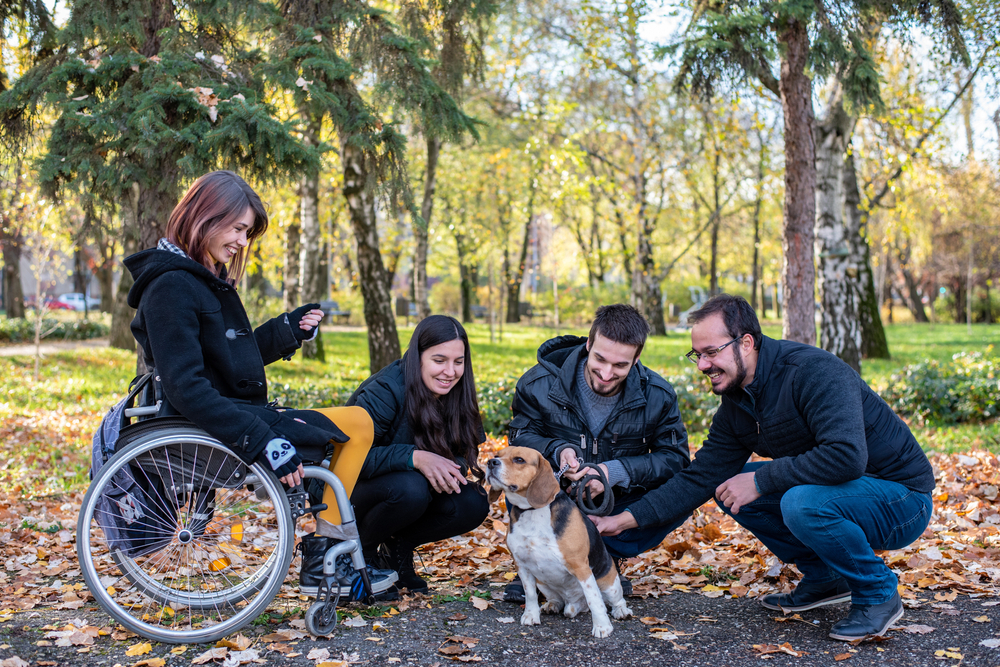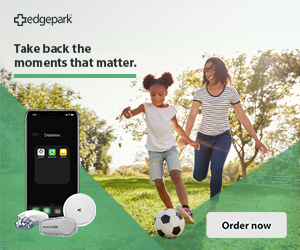A guide to type 1 diabetes and carb counting
If you're newly diagnosed with type 1 diabetes (t1d), you may not yet be fully versed in carb counting. It might seem like a lot to handle at first, but it can feel like second nature once you get the hang of it!
After all, type 1 diabetes and carb counting go hand-in-hand. After some practice, you'll likely see that carb counting can make navigating diabetes so much easier. So, what is carb counting, and how can you get started? Here's what to know.
Why count carbs?
As you may already know, there are three main components of food (also known as macros): fats, proteins, and carbohydrates. Although fats and proteins are sometimes used for energy, fats don't raise blood sugar, and proteins raise blood sugar only minimally.
Carbohydrates are the parts of food that turn into glucose (sugar) when our bodies digest them, which is why carb counting is essential for managing t1d. When you count carbs, you can have a better idea of how much your blood sugar might rise after a meal. You can then anticipate that rise and pair your insulin dose to your carb intake so that your blood sugar stays right where you want it.
Carb counting may take a little getting used to, but the benefits of balanced blood sugar are well worth it. Keeping your carb intake on an even keel — and using the right amount of insulin to go with it — will help ensure that your body has just the right amount of fuel it needs for energy.
Which foods contain carbs?
Anytime you eat something that comes in a package and has a food label, you'll want to look for the "Total Carbohydrates" shown. This can help you gauge how your body will react and enable you to plan accordingly.
Wondering where you can find carbs in your current diet? All of the foods listed below contain carbohydrates. Even though two foods may have the same amount of carbohydrates, it's important to remember that not all foods are nutritionally equal. Foods consumed closer to their natural state are higher in vitamins and minerals needed to maintain health. Fiber intake is also an important consideration for people living with diabetes. The more fiber a food has, the more slowly it will be digested. Slower digestion means smaller spikes in blood sugar levels.
While carbohydrate counts can vary due to ingredients and portion size, here is a list of approximate carbohydrate amounts in common foods:
- Milk and unsweetened yogurt (12 grams carb per 8 oz milk or 6 oz yogurt)
- Fruit and fruit juice (15 grams carb per small piece of fruit or 4 oz juice)
- Bread, cereal, rice, and pasta (15 grams carb per slice of bread, 1/3 cup rice, 1/2 cup cereal or pasta)
- White potatoes and yams (15 grams carb per 1/2 cup)
- Peas and corn (15 grams carb per 1/2 cup)
- Legumes (any kind of beans except green beans typically average 15 grams carb per 1/2 cup)
- Chips and pretzels (15 grams carb per 7-10 chips or 15 mini pretzels)
- Cakes, pie, and candy (80 grams carb in 1 slice frosted cake, 40 grams in 1 piece of pie, 5 grams in 1 piece of butterscotch candy)
- Honey and molasses (16 grams carb per Tablespoon of each)
- All forms of sugar (13 grams carb per Tablespoon)
How many carbohydrates are right for me?
The number of carbohydrates your body needs depends on your height, weight, age, activity level, and current blood sugar level. The recommended carbohydrate intake for people with diabetes is between 45 and 60 grams per meal, but each person has unique needs.
If you haven't already met with a Registered Dietitian Nutritionist or Certified Diabetes Care and Education Specialist (CDCES), consider connecting with one. These professionals can help you determine your target number of carbohydrates, so you can get all the energy you need without raising your blood sugar too much.
Once you have your personal carbohydrate recommendation, you can begin to count carbs. You'll need to "cover" the carbs you eat at each meal with the right amount of insulin. If you eat too few carbs and/or take too much insulin, you may end up with low blood sugar. And if you eat too many carbs or take too little insulin, you might experience high blood sugar.
There are numerous apps designed to make carb counting easier. Here are three popular options:
- Calorie King is easy to navigate and has a vast database of foods, including menu items found at chain restaurants.
- Figwee is available for iPhone users. This app is great for people who prefer a visual learning style — no math required. Figwee helps the user determine carb counts using pictures.
- One Drop offers a comprehensive app built specifically for people with diabetes. There is a small monthly fee, but using this app consistently may help you predict low or high blood sugars before they happen, and that may be well worth the cost.
Tips around type 1 diabetes and carb counting
Nobody's perfect and everyone makes mistakes occasionally. Chances are, you'll make an error in your carb counting at some point. It's OK!
If you eat more carbs than you need, you'll likely end up with high blood sugar. If your blood sugar is dangerously high — or if you have symptoms such as blurry vision, slurred speech, or a headache — it's important to call your doctor or 911 right away. If not, you may be able to wait until your next meal and use the insulin correction factor your physician gave you. You can also take a walk and drink a few large glasses of water to help clear the extra glucose from your bloodstream.
If you eat fewer carbs than you need (but you take your "normal" amount of insulin), you'll likely end up with low blood sugar. A blood sugar of fewer than 70 milligrams per deciliter may lead to loss of consciousness and needs to be treated right away. To treat a low, choose one of the following options:
- 4 ounces of juice
- 6 ounces of regular (non-diet) soda
- 3-4 glucose tabs
- 3 pieces of hard candy, such as butterscotch or peppermint
After eating any one of the foods above, wait 20 minutes and then check your blood sugar again. If your blood sugar has come up above 70 milligrams per deciliter, you can take in more food. If it's near a mealtime, have a full plate — if you're in between meals, eat a snack (such as half a sandwich). If your blood sugar is still less than 70 milligrams per deciliter, repeat the same process and wait another 20 minutes. If you can't get your blood sugar up above 70 milligrams per deciliter on your own, you may need to use a glucagon pen and/or call 911.
Carb counting can take some getting used to, but once you understand the ins and outs, it can be a powerful tool for managing diabetes. Just remember to go at your own pace, cut yourself some slack, and don't hesitate to ask for help when you need it.
Curious to know more about living with type 1 diabetes? Explore the Edgepark Health Insights blog for more actionable tips and valuable information.




